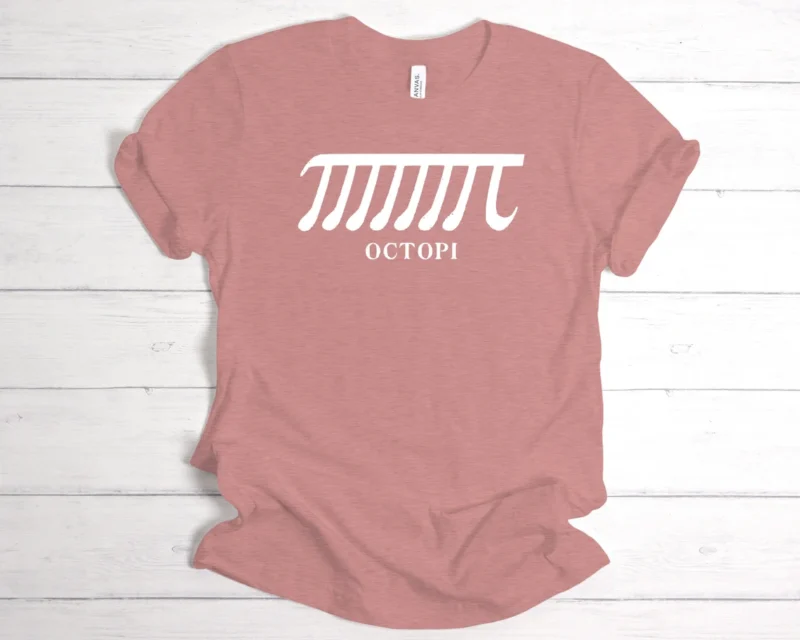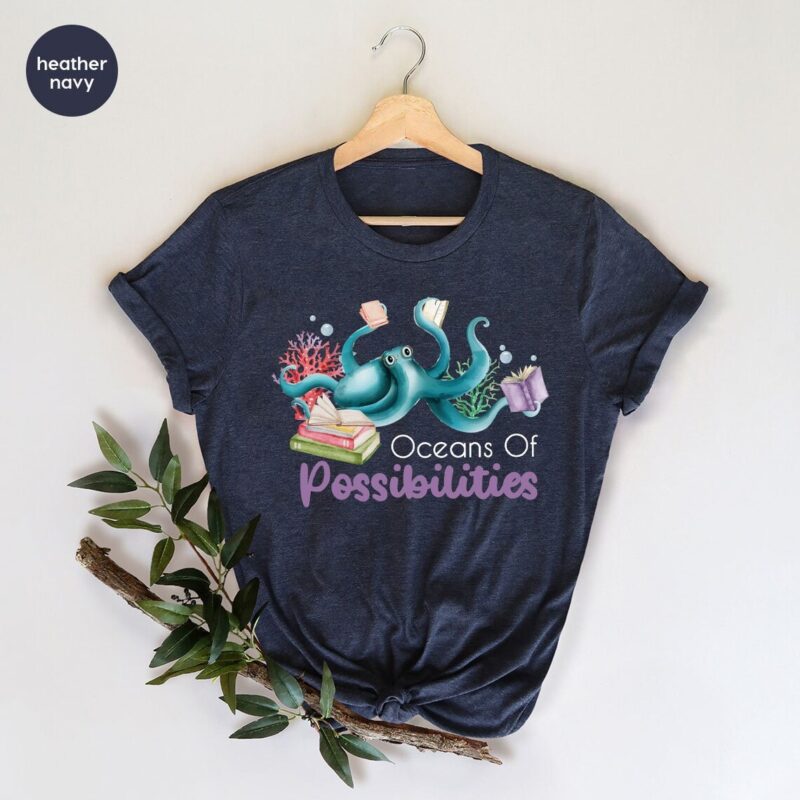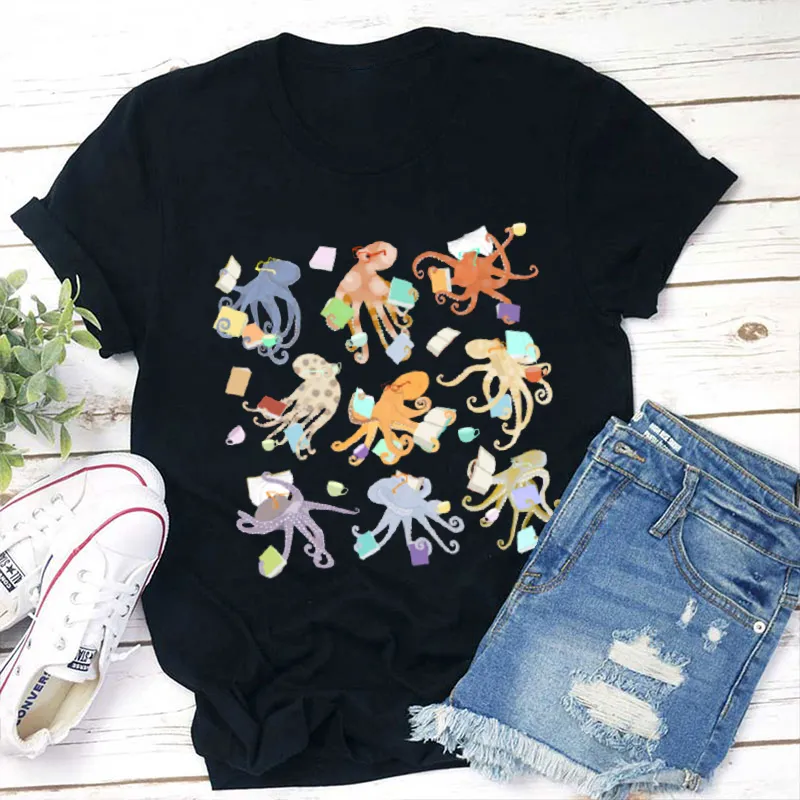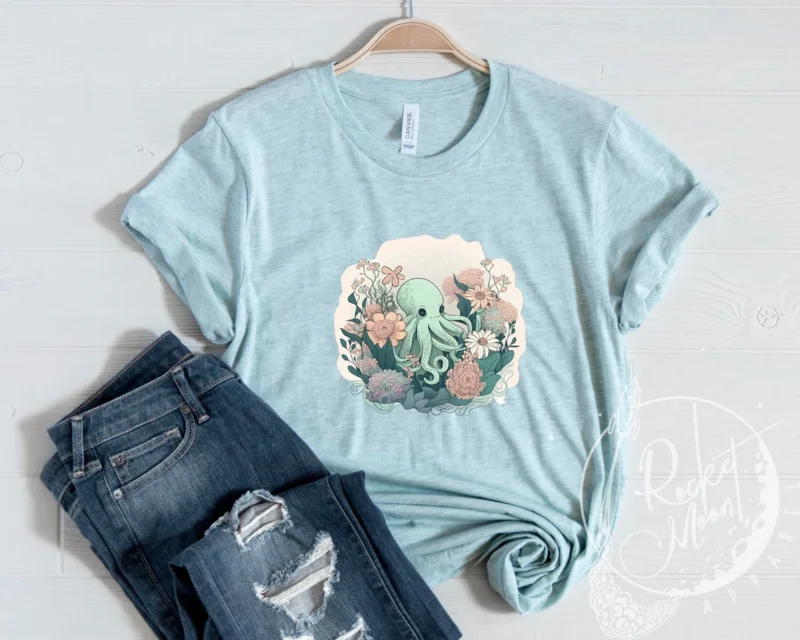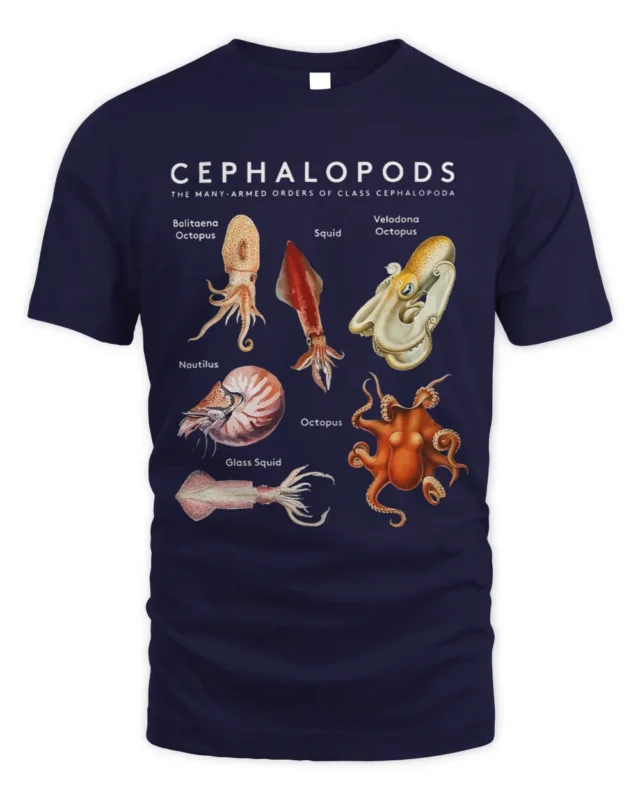Welcome to the captivating world of octopus camouflage! In this octopus camouflage STEM activity, students will discover the incredible abilities of the octopus, one of nature’s most skilled masters of disguise. This is one of our most fun octopus STEM activities yet!
Throughout this octopus lesson plan, students will uncover the secrets of how octopuses use their remarkable camouflage tactics to seamlessly blend into their surroundings and stay hidden from predators.
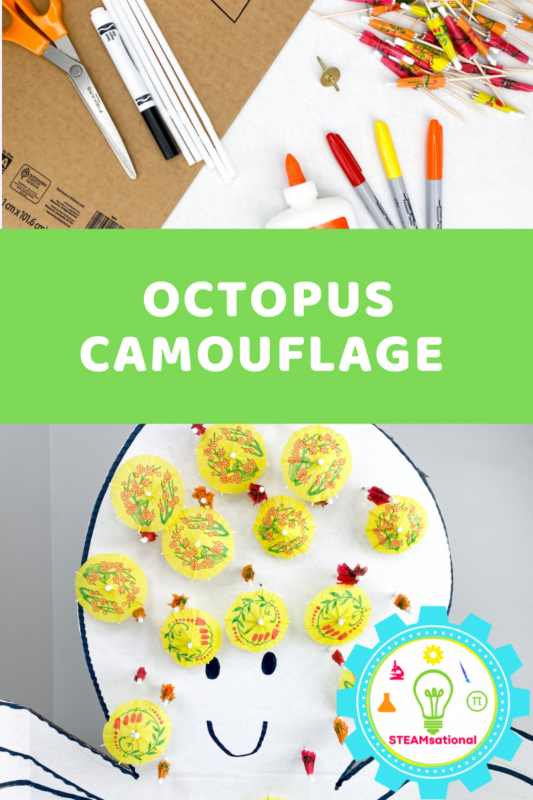
Students will embark on a fun-filled exploration of how an octopus can use color and other methods to hide from predators and many other tasks and create a camouflage STEM activity showcasing one way how an octopus can change colors quickly to blend in with their environment.
Children will investigate color perception, camouflage methods, and the science behind the octopus’ capacity to modify the texture and color of its skin.
Camouflage STEM Activity- the Magic of Octopus Camouflage
Learn all about the different ways an octopus can use camouflage in their everyday life to improve their quality of life and survive in the dangerous world of the ocean before challenging students to experiment with creating their own color-changing octopus.
Table of Contents
How Does an Octopus Use Camouflage?
Here are some ways that an octopus uses camouflage to survive in the ocean.
- Color Matching: Octopuses can change the color of their skin to match the colors around them. If they are on a sandy ocean floor, they can make their skin look sandy too. This helps them hide from predators or sneak up on their prey.
- Textural Camouflage: Octopuses can also change the texture of their skin to match the objects they are hiding on. They can make their skin bumpy like rocks or smooth like coral. This makes it harder for other animals to see them.
- Disruptive Coloration: Sometimes, octopuses have patterns on their skin that break up their shape. These patterns can include spots, stripes, or lines. Disruptive coloration helps to confuse predators by making it difficult for them to see the outline of the octopus.
- Shadowing: Octopuses can create shadows on their bodies to make themselves look more three-dimensional. This helps them blend into their surroundings by giving them a depth that matches the objects around them.
- Counterillumination: Some octopuses live in the deep ocean where there is little light. They have the ability to produce light on their underside, which helps them match the faint light coming from above. This makes them blend in with the light from above and helps them hide from predators.
By using these camouflage techniques, octopuses are masters of disguise. They can change their appearance to match their environment, making it harder for other animals to spot them.
Camouflage is a vital tool for octopuses to survive and avoid being eaten or detected while hunting for their own food.
Here are some of my favorite octopus resource items to have on hand for any octopus activities!
Octopus Lesson Resources
Use these octopus classroom supplies and products to go along with your octopus STEM lessons!
 |  |  |  |
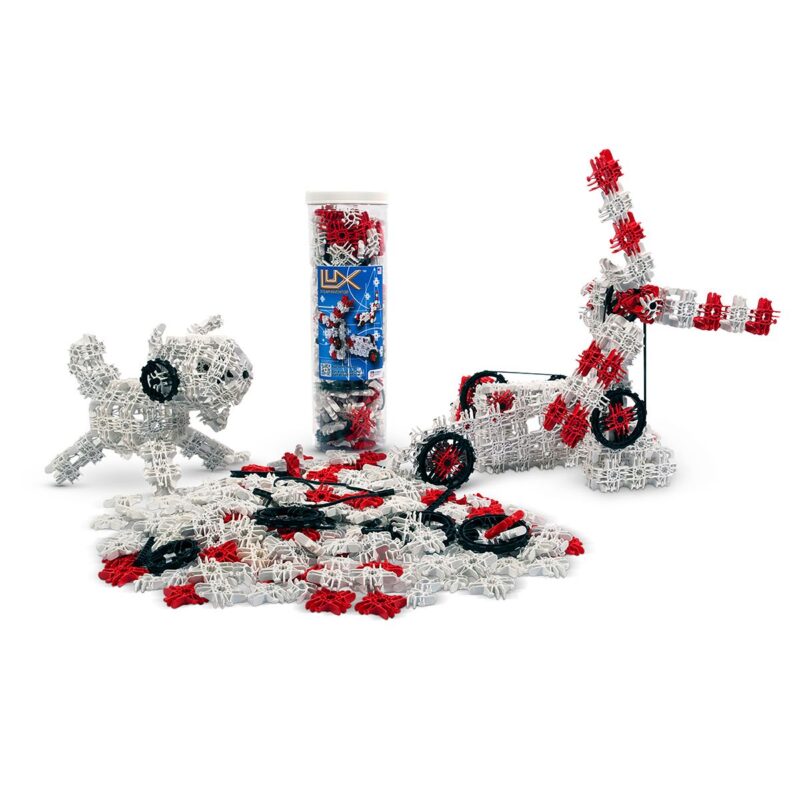 | 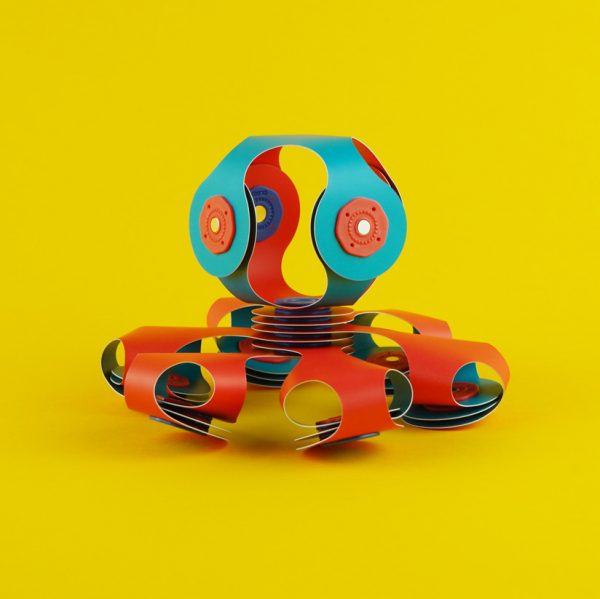 | 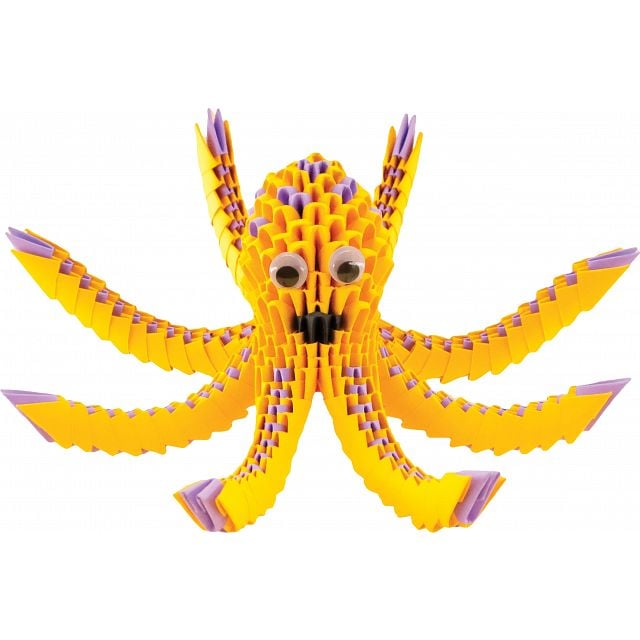 | 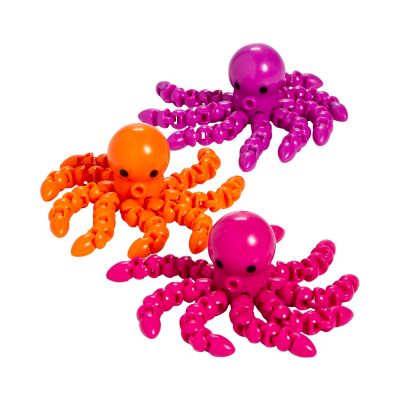 |
 |  |  |  |
If you need more inspiration for your octopus lessons, check out these octopus lesson plans!
How Does an Octopus Change Color?
Octopuses have a remarkable ability to change color, allowing them to blend in with their surroundings and communicate with other octopuses.
They achieve this color-changing ability through specialized cells called chromatophores, which are present in their skin. Here’s an explanation of how an octopus can change color:
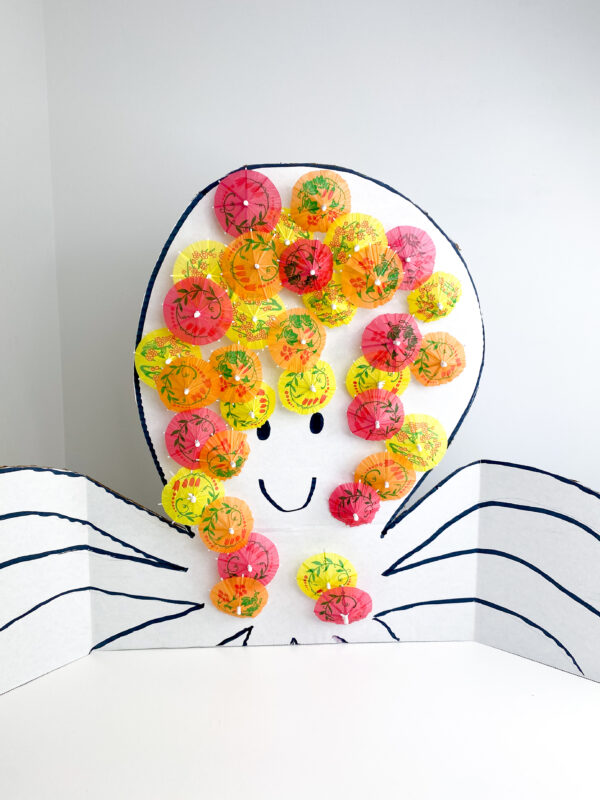
- Chromatophores: Octopuses have three main types of chromatophores: red, yellow, and brown/black. Each type contains pigments that can be expanded or contracted to reveal or hide specific colors.
- Nervous System Control: The octopus’s nervous system controls the expansion and contraction of the chromatophores. The brain and sensory organs detect changes in the environment, such as light, texture, and color, and send signals to the chromatophores for appropriate color adjustments.
- Muscular Control: Each chromatophore is surrounded by radial muscles. When these muscles contract, the pigment sacs within the chromatophores expand, allowing the color to become more visible. Conversely, when the muscles relax, the pigment sacs shrink, causing the color to fade.
- Rapid Color Changes: Octopuses can change colors rapidly by adjusting the size and pattern of pigment patches in their skin. This ability helps them camouflage with different backgrounds or communicate through displays.
- Additional Camouflage Mechanisms: In addition to chromatophores, octopuses also employ other camouflage techniques. They can change the texture and shape of their skin to match their surroundings, further enhancing their camouflage abilities.
Why do octopuses change color?
An octopus that can change color has many benefits. Here are a few explained at a 6th grade reading level:
- Camouflage: By changing its color, an octopus can blend into its surroundings and become nearly invisible. This helps it hide from predators that might want to eat it. It also allows the octopus to sneak up on its own prey without being noticed.
- Protection: Changing color can help an octopus protect itself. If it feels threatened, it can quickly change its appearance to scare away predators. For example, it might turn dark and raise its arms to make itself look bigger and more intimidating.
- Communication: Octopuses use color changes to communicate with each other. They can display different patterns and colors to express their emotions or to show their intentions. For instance, they might turn bright red or flare their arms to warn other octopuses to stay away from their territory.
- Hunting: Changing color is a useful hunting strategy for an octopus. When hunting, it can match its surroundings to surprise its prey. It might blend in with rocks or coral to get closer to its target without being noticed. This increases its chances of catching its food successfully.
- Mating: Color changes play a role in octopus mating rituals. Male octopuses may display vibrant colors to attract females and show that they are ready to mate. Females, on the other hand, can use color changes to signal their availability or to communicate with potential mates.
How fast can an octopus change color?
There’s no other creature on Earth that can match the speed of an octopus changing color.
These Octopuses can change their skin’s color, brightness, contrast, and pattern in an astonishing 200 milliseconds. That’s just one-fifth of a second- as rapid as the blink of a human eye!
How to Make a Color-Changing Octopus
Follow along with the step-by step directions for how to set up your own octopus camouflage STEM activity in your classroom. But first, find additional resources to complete your octopus camouflage lesson.
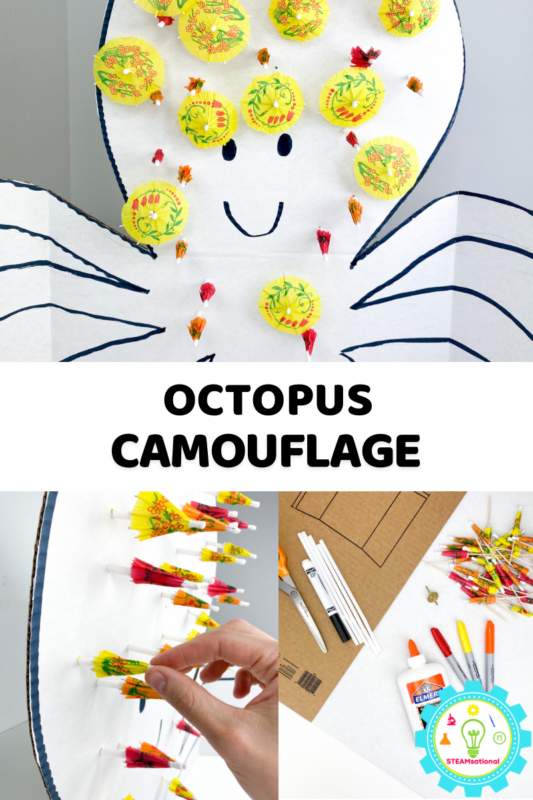
Octopus Camouflage Lesson Plan
Here is a lesson plan you can use to go along with your octopus camouflage STEM activity.
Objective
Students will explore the fascinating world of octopus camouflage, understand its mechanisms, and learn about the adaptive advantages it provides.
They will engage in hands-on activities and discussions to deepen their understanding of how octopuses use camouflage to survive and thrive in their environments.
Materials
- Pictures or videos showcasing octopus camouflage
- Various textured and colored materials (e.g., construction paper, fabric, sponge)
- Large clear containers or tanks
- Stopwatch or timer
- Writing materials
Octopus Books for the Classroom
Here are some of our favorite non-fiction octopus books for kids to learn more fun facts about octopuses!
Lesson Activities
Begin the lesson by showing pictures or videos that demonstrate the incredible camouflage abilities of octopuses. Discuss with students what they observe and encourage them to share their thoughts and questions
Explain that octopuses are masters of disguise and can change their appearance to blend in with their surroundings. Discuss how camouflage helps octopuses survive in their habitats and protect themselves from predators.
Complete the octopus camouflage STEM activity in the printable instructions below.
Engage the students in a class discussion about the mechanisms behind octopus camouflage. Discuss the importance of color-changing cells called chromatophores, skin texture changes, and body posture adaptations.
Explore the concept of adaptive advantage by discussing how effective camouflage increases an octopus’s chances of survival, prey capture, and predator avoidance.
Present students with case studies or examples of specific octopus species and their camouflage strategies. Discuss how each species adapts its camouflage to its unique habitat and explain the benefits it provides.
Encourage students to think critically about the trade-offs involved in octopus camouflage, such as the energy cost and the need for rapid color changes.
Octopus STEM Kits
These octopus STEM kits teach kids how different parts of an octopus works and offer another fun hands-on octopus STEM activity for kids to learn about the amazing octopus!
 |  |
 |  |
If you need even more extensions for your octopus STEM activities, check out these octopus lesson plans!
Lesson Discussion Questions
Ask students to reflect on the activity and what they learned about octopus camouflage. Have them describe the strategies they used to create effective camouflage designs and explain how they relate to the mechanisms discussed in class.
Encourage students to think about other animals that use camouflage and how their strategies compare to those of octopuses.
If time allows, students can conduct research on different species of octopuses and create presentations showcasing their unique camouflage strategies and habitats.
They can also explore how scientists study and analyze octopus camouflage, including technological advancements in observation and experimentation.
Lesson Assessment
Assess students’ understanding through their active participation in discussions, the quality of their camouflage designs, and their reflections on the activity.
Consider evaluating their comprehension through worksheets or written responses, focusing on key concepts such as adaptive advantage and the mechanisms of octopus camouflage.
More Easy STEM Activities
Here I show you how to complete an octopus camouflage STEM activity, but if you like the idea of making more STEM challenges, check out these other octopus-themed activities below!
- Why Doesn’t An Octopus Have Bones? Octopus Science Experiment
- 12+ Easy and Fun Ocean Science Experiments for Curious Kids
- O is for Octopus Alphabet Craft
- Ocean coloring pages
Octopus Shirts for Teachers
Check out these super fun octopus shirts you can wear during your octopus lessons!
How to Teach the Camouflage STEM Activity in the Classroom
Follow along with these printable directions for how to set up your octopus camouflage STEM challenge in your classroom!
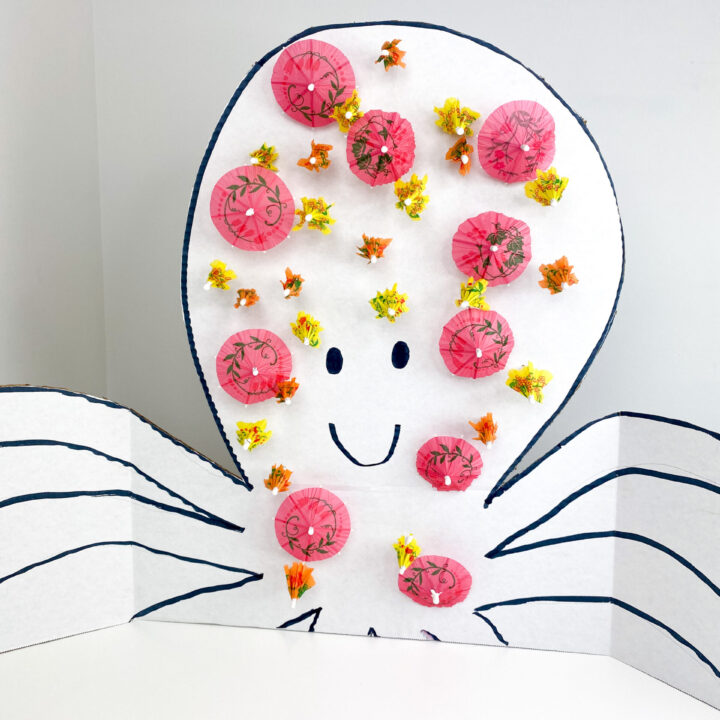
Octopus Camouflage STEM Challenge Directions
Students will create a model of octopus chromatophores and explore how they work to change the color and appearance of octopuses. They will engage in a hands-on activity to mimic the behavior of chromatophores and observe the color-changing process involved in this octopus camouflage STEM activity.
Materials
- Cardstock paper
- Red, brown, and yellow markers
- Toothpicks
- Umbrellas (red, brown, and yellow, matching the colored dots)
- Straws (cut into 1-inch sections)
Tools
- Hot glue gun and glue sticks
- Scissors
Instructions
- Introduce the concept of octopus chromatophores as specialized cells that allow octopuses to change their color and blend into their surroundings.
- Explain that students will create a model to understand how chromatophores work.
- Have students draw a large octopus body onto their cardstock paper.
- Use red, brown, and yellow markers to make dots on the center section, with each color representing the number of umbrellas you have of the matching color.
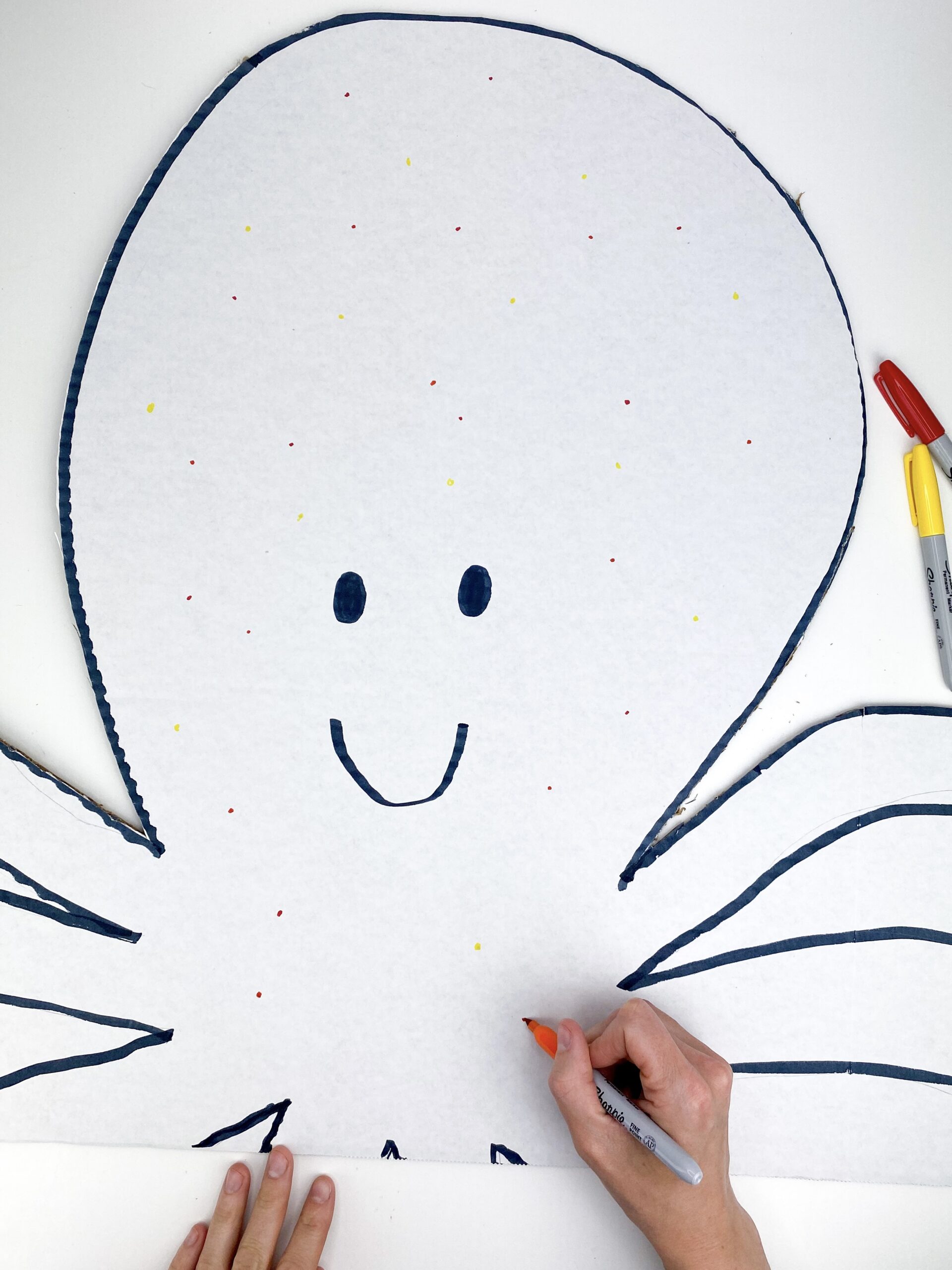
- Space the dots out equally to simulate the distribution of chromatophores on an octopus.
- Begin with one color of umbrellas (e.g., red).
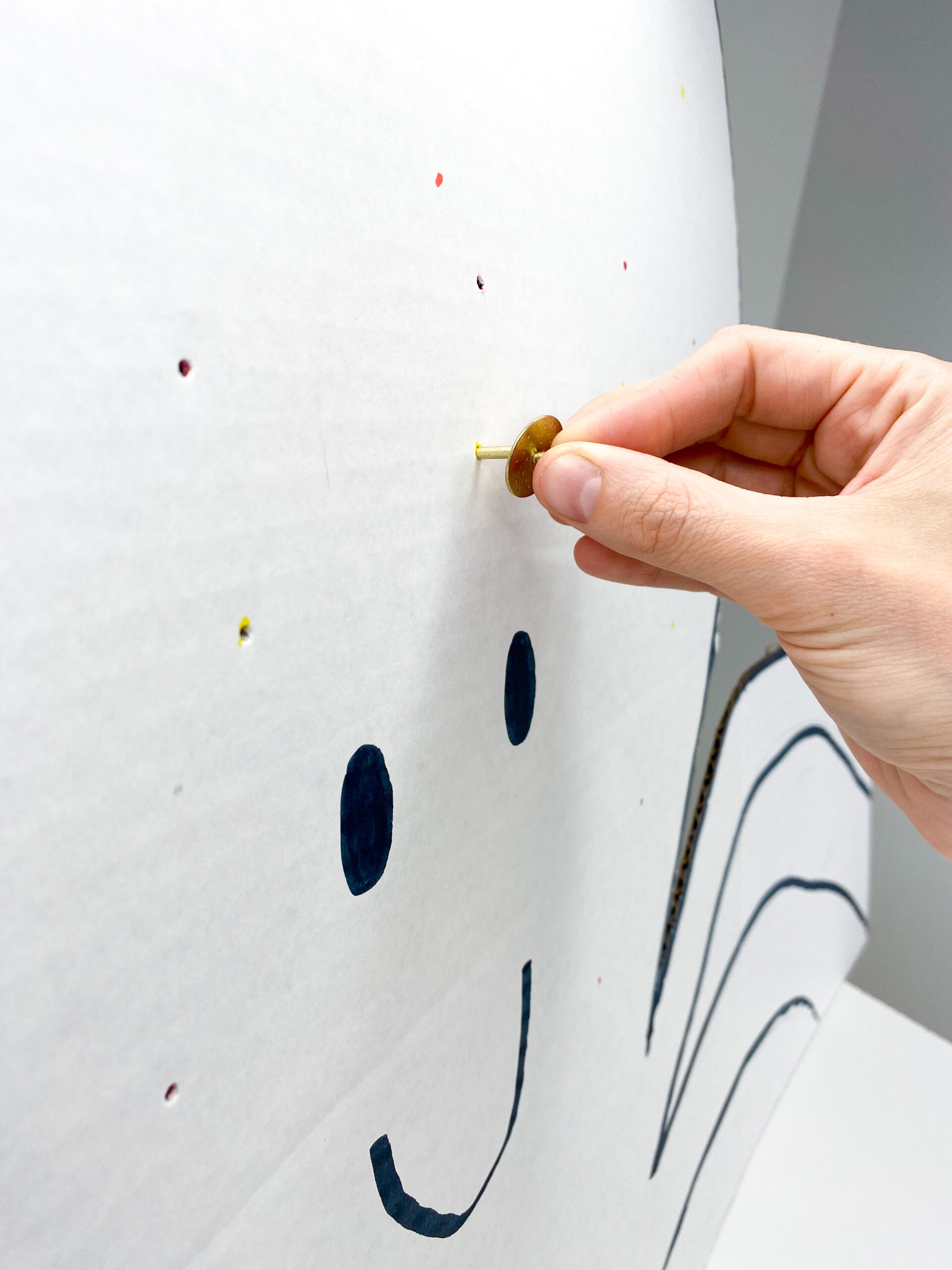
- Gently open each umbrella and cut a 1-inch section from a straw.
- Pass the toothpick end of the umbrella through the straw section.
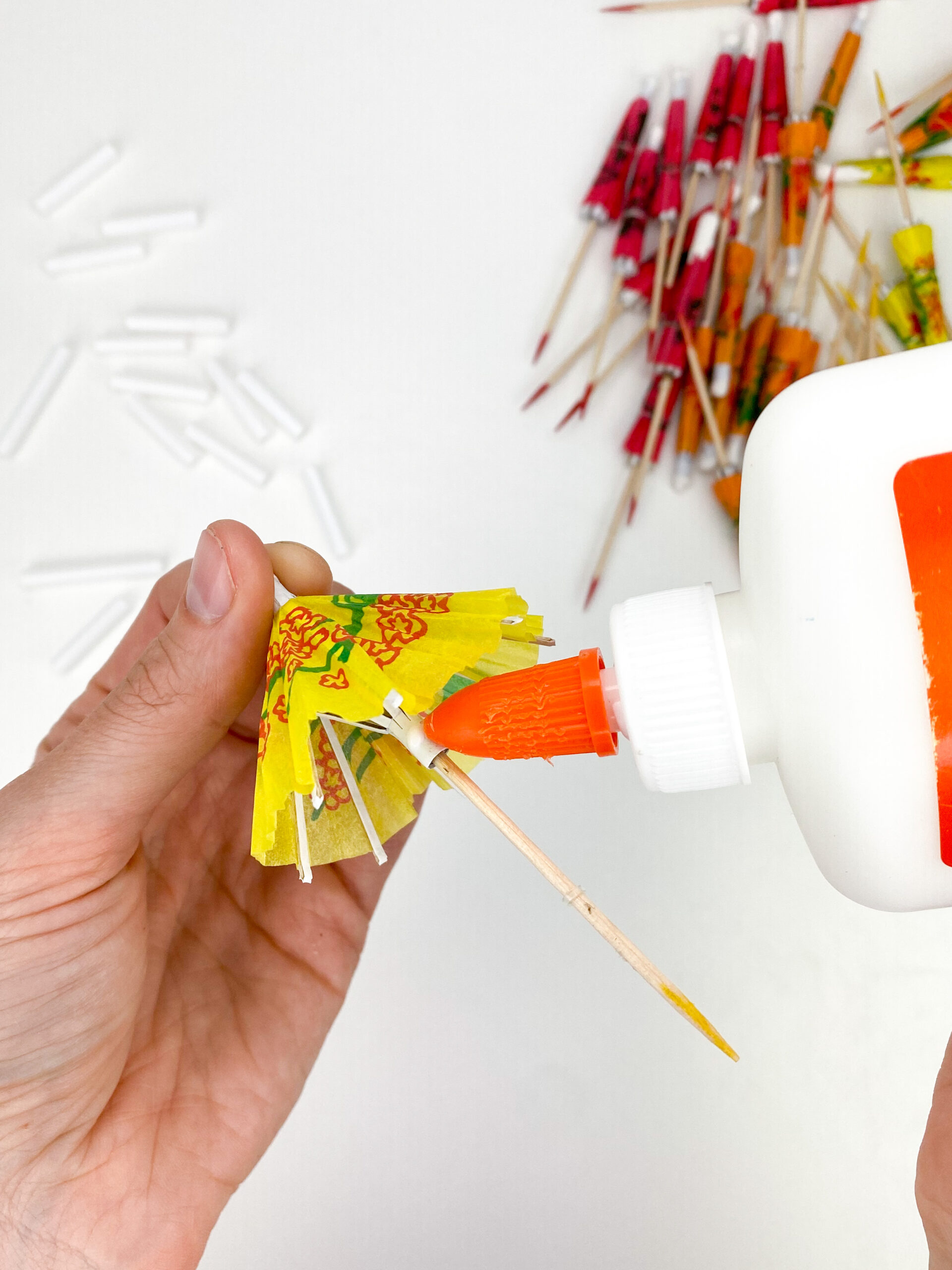
- Use the corresponding Sharpie color to color the end of the toothpick (use brown Sharpie for orange umbrellas).
- Place a small drop of glue on the runner of the umbrella (the cuff part that moves up and down).
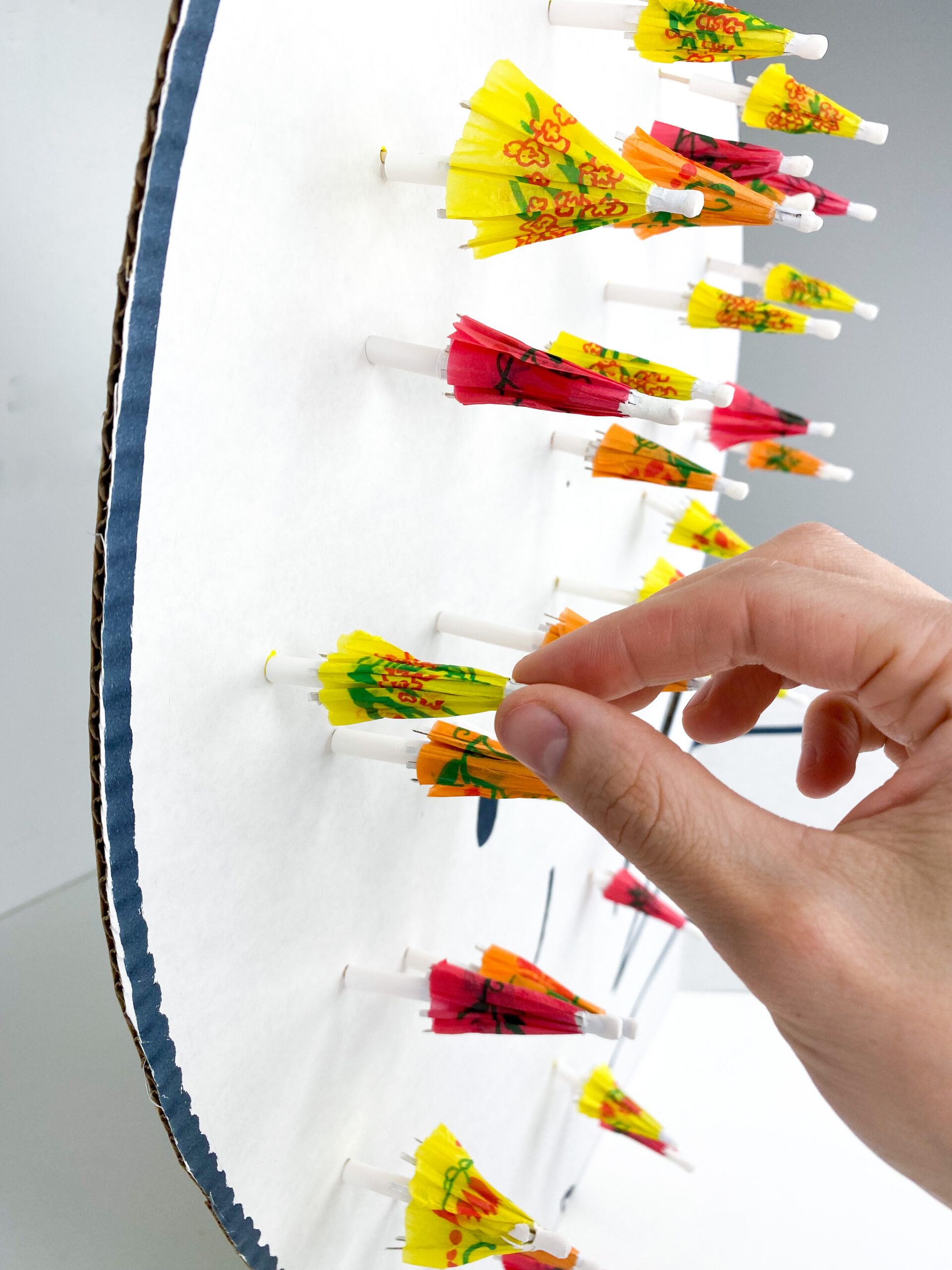
- Slide the straw section over the glue, ensuring it evenly coats all sides of the runner.
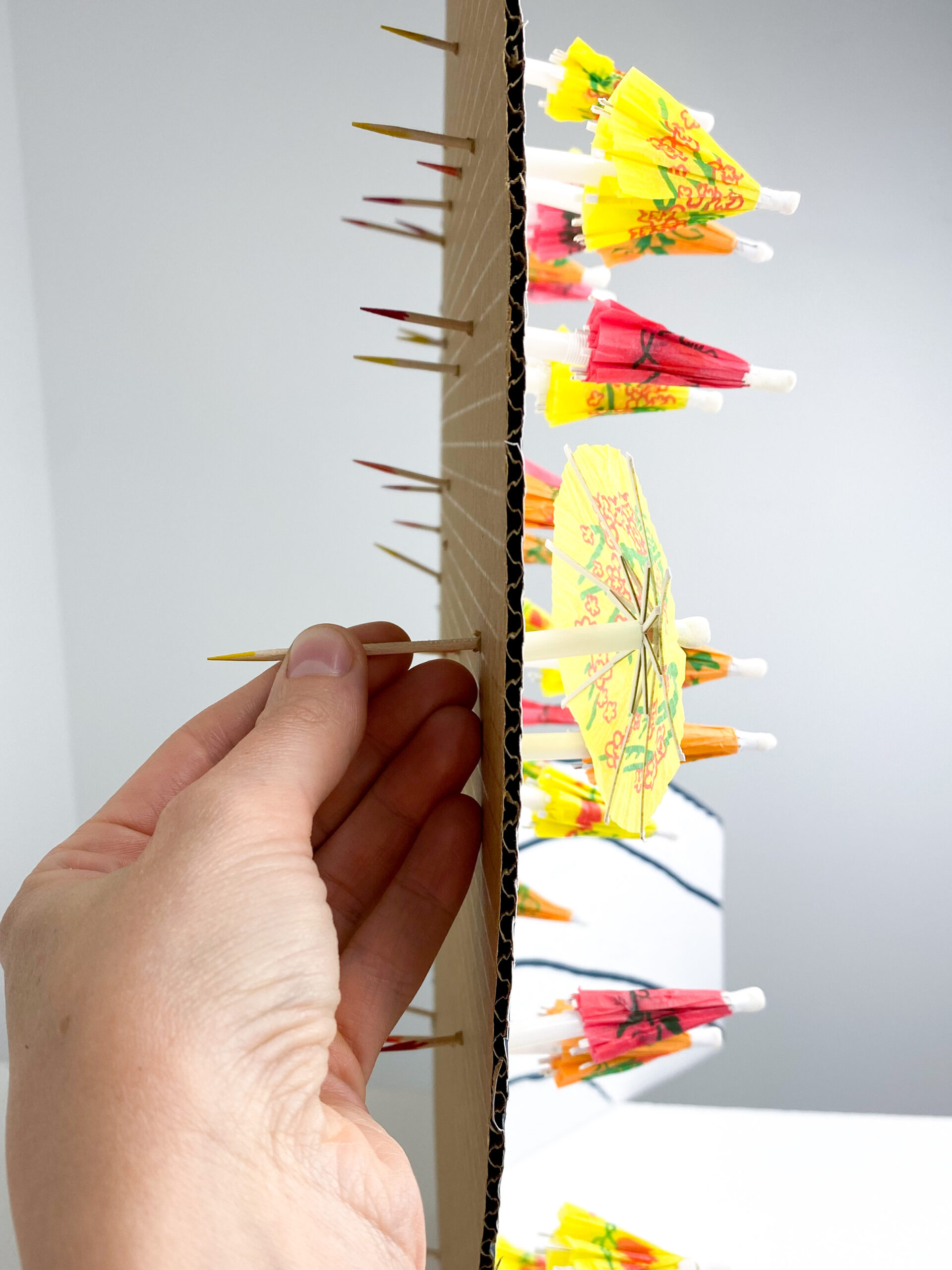
- Let the umbrella sit so that the glue can dry.
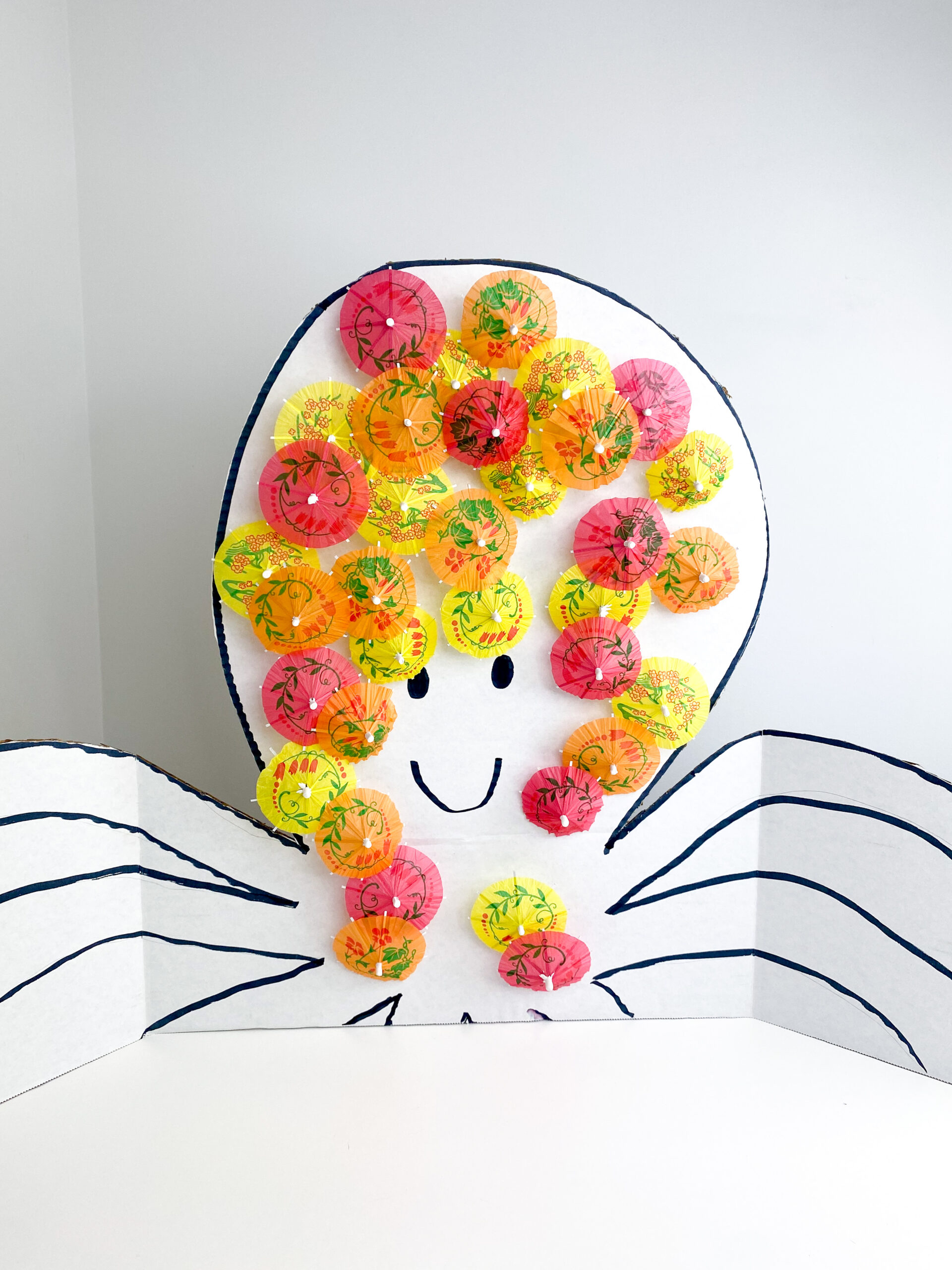
- Repeat these steps for each color of umbrellas.
- Insert the toothpick end of each umbrella through the corresponding hole in the display board.
- Call out a color (e.g., "Red").
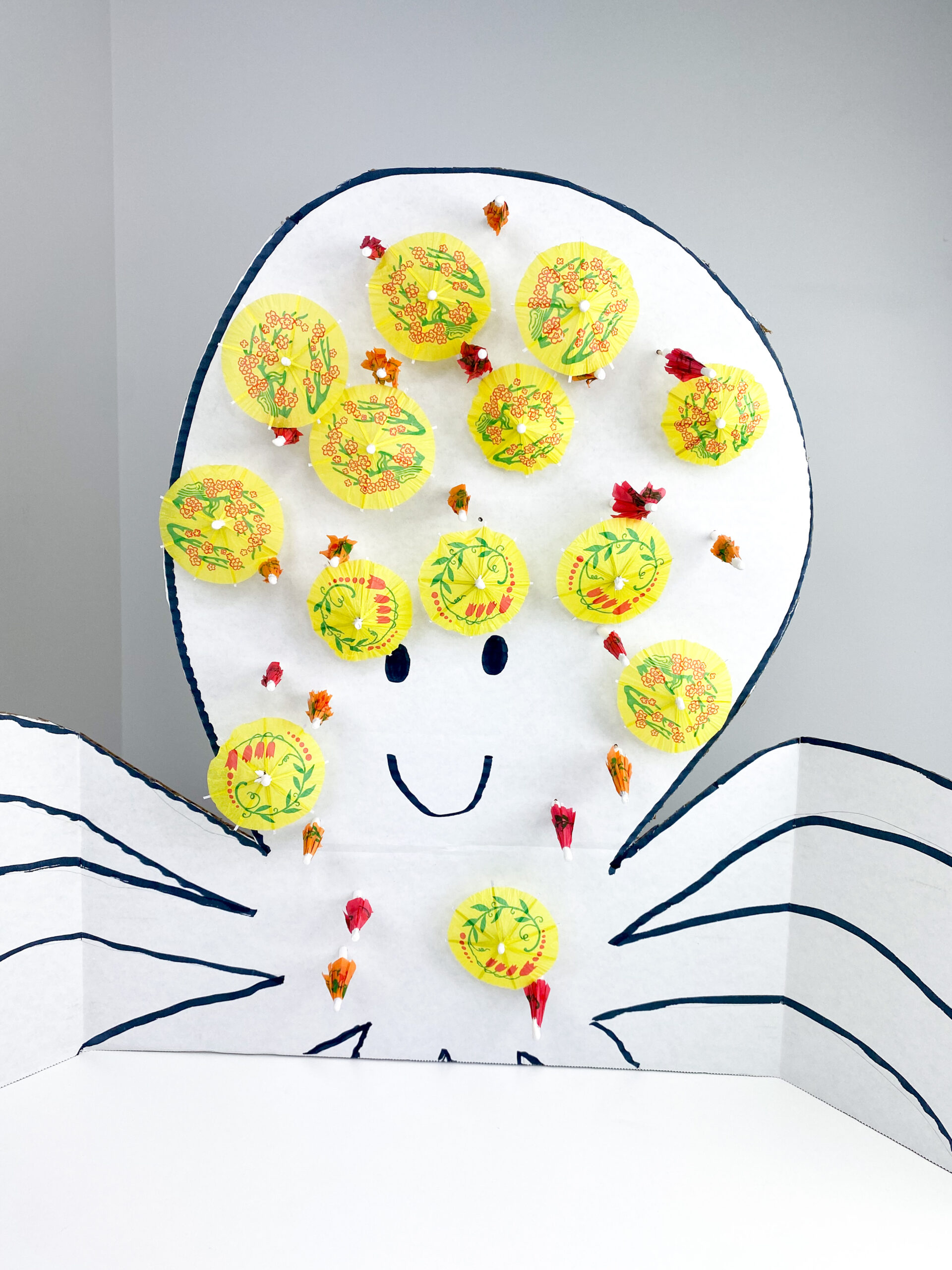
- Have one student from each group gently pull the ends of the same-colored toothpicks to open up the "chromatophores."
- Observe and discuss how the umbrellas change their appearance, mimicking the color-changing ability of octopuses.
Notes
Recommended Products
As an Amazon Associate and member of other affiliate programs, I earn from qualifying purchases.







